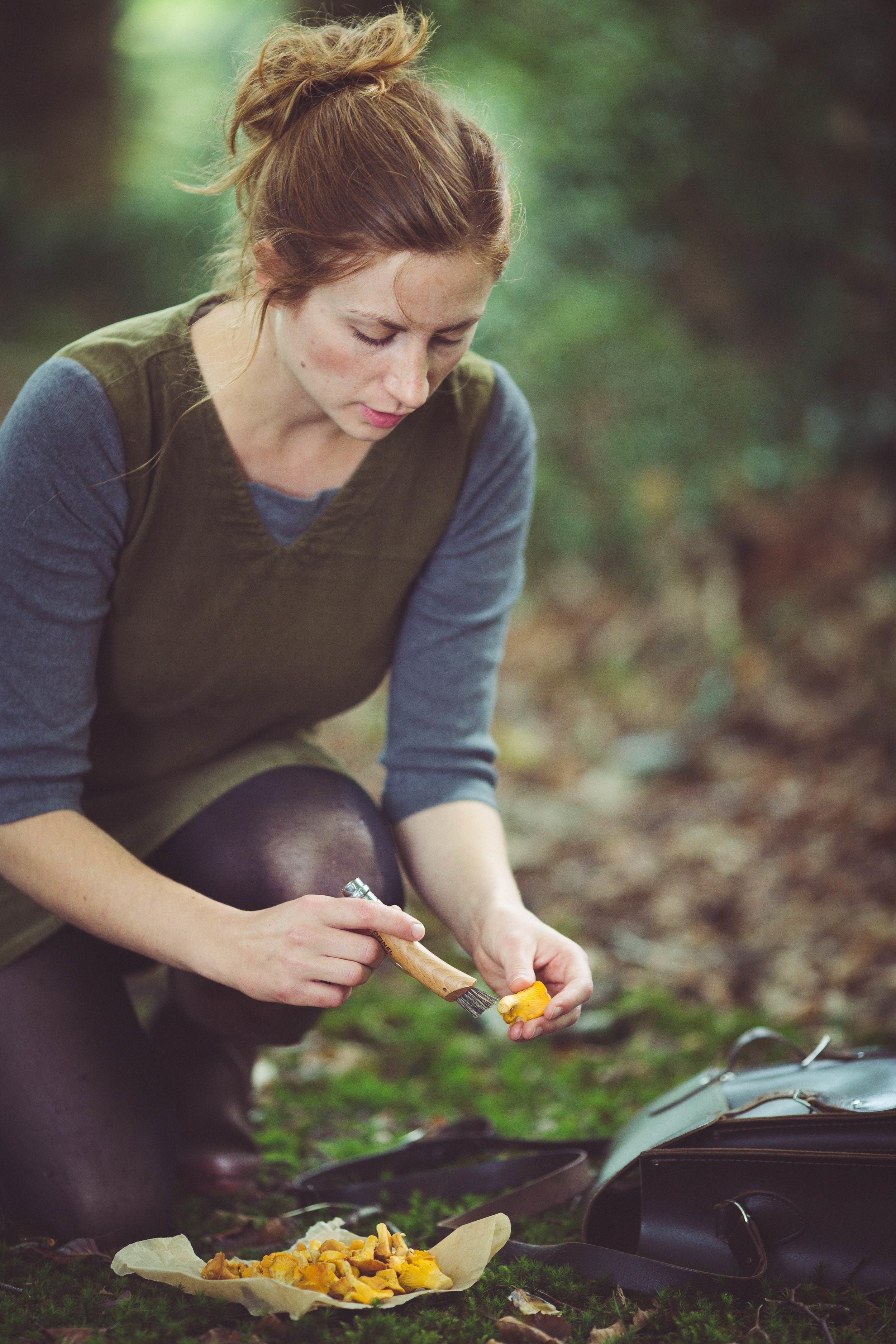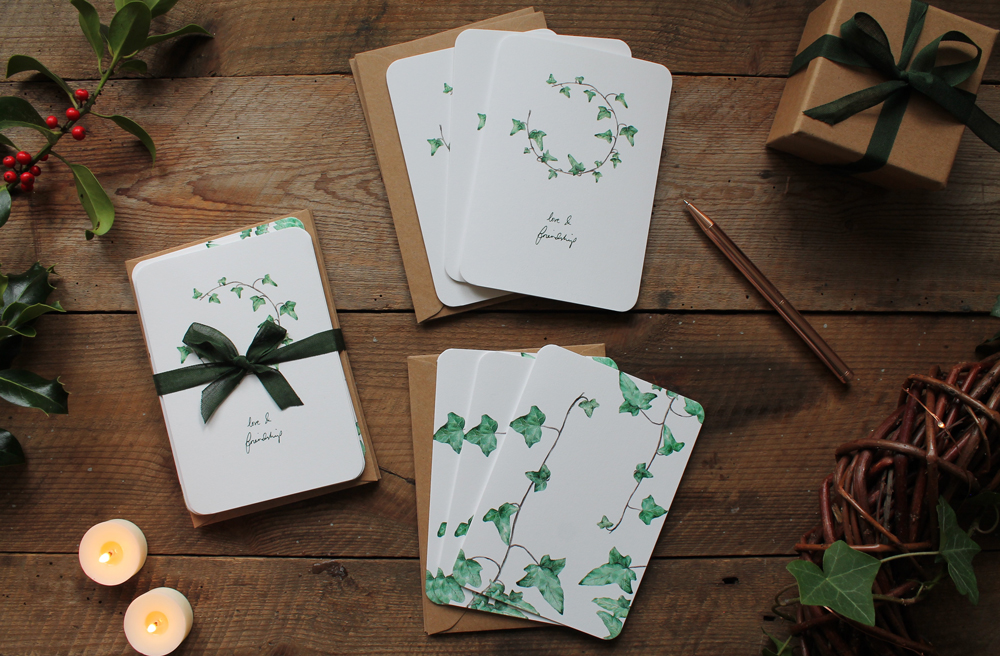Nicola: The Seasonal Table is an online journal of slow food and slow living from your smallholding in rural England. Can you tell us some more about it?
Tom & Kathy: The Seasonal Table is a collection of seasonal recipes and stories. Each is linked to what happens on our smallholding throughout the year. The recipes are inspired by the food we grow ourselves, sourced locally or wild-harvest on our foraging adventures. The stories are intrinsically linked with the provenance of the food. We started the online journal as a resource for others. We thought it could be helpful to those interested in seasonal and sustainable food. As well as people considering embarking on a similar smallholding journey themselves.
Nicola: Can you explain to us what a smallholding is?
Tom & Kathy: A smallholding is a house with an area of land that can be used for small-scale fruit and vegetable growing, or rearing animals. This leads to a degree of (or complete) self-sufficiency for the people that live there. We decided to turn our cottage and 1.5 acres of land into a smallholding when we moved here from the city suburbs. We created a vegetable garden. We raised a flock of chickens to provide us with meat and eggs. We also reared a gaggle of geese, which help mow the grass and provide us with enormous eggs. The birds live in the established mixed fruit orchard that came with the cottage. We also built log stores to dry felled wood from the land, which we use in our wood-burning stoves. And we set up a little apiary with the beehives we brought with us from London, to provide us with honey and beeswax. We're planning to continue developing the smallholding over the next few years. There's still so much we would like to do. Next on the list is keeping pigs, sheep or goats (we haven't decided which yet)...
Nicola: What inspired you to make the change from city living?
Tom & Kathy: When we first moved into our flat in the city suburbs, the landlady kindly let us build a couple of raised garden beds. It was here we first began growing our own fruit and vegetables. We also went on a beekeeping course, and we set up beehives on the patio by our kitchen window. It was on this small-scale we realised the joy of being able to produce our own food. During this time our evenings were spent watching television programs on rural living and growing food. These programs included River Cottage, It's Not Easy Being Green, Jamie at Home and The Edible Garden. We spent our lunch breaks in libraries and bookshops. We'd spend hours flicking through books on country living, farming, and smallholding. As our interest grew we increasingly found ourselves drawn to the idea of moving to the country. We wanted to be able to have space to grow our own fruit and vegetables, plus keep animals too. After much deliberation, we decided to relocate to the hills of rural Somerset. It was one of the best decisions we've ever made.
Nicola: You say that you’re living your version of The Good Life. Can you tell us what your lives look like on a daily basis? And what is the most fun part for you both?
Tom & Kathy: Our day starts with letting the chickens and geese out to free-range in the orchard. Spending time with the geese is one of our favourite parts of the day. They are such characters and are very entertaining to watch. We both still work full-time, but when we aren't at work our days are filled with a variety of activities. These activities change as the seasons change. For example, in spring we sow seeds in the raised beds and hatch chicken eggs. Spring is also the time for the first beehive inspections. Summer is weeding, vegetable planting, berry harvesting, swarm control and honey extraction. Autumn is for apple pressing, bonfires and mushroom foraging. Winter is for pruning, tidying and planning for the year ahead.
Throughout the year the kitchen remains busy. We cook and enjoy our produce when it’s at its best, as well as preserve and squirrel things away to last throughout the year. Nothing goes to waste. Our close connection to seasonal change means we appreciate everything while it's here. We also look forward to what's to come and never tire of the experience. It's hard work, but very rewarding. We love every bit of it.
Nicola: You share some amazing recipes on your blog. Is slow food something you've always been interested in? And what does slow food mean to you?
Tom & Kathy: Slow food is something we've become increasingly interested in over time. This interest has come hand in hand with our understanding of where our food comes from, and how it's produced. To us, slow food means taking responsibility for sourcing our own food in a sustainable way. It means having as little impact on the environment as possible. It is also about knowing the provenance of the ingredients we use.
We grow, forage or produce as much of our own food as we can and take an organic approach, in doing so. The majority of the food we buy is also organic and, as much as possible, sourced locally. We find this keeps us grounded in the seasons throughout the year. It also ensures we are enjoying and appreciating food when it's at its best. Our slow food approach is reflected in the recipes on The Seasonal Table.For example, during spring we posted a recipe for rhubarb crumble infused with wild watermint sugar.Spring is when the first sticks of rhubarb appear in our vegetable patch, and wild watermint leaves pop up along the stream.Then in summer, when courgettes were in plentiful supply and the chickens were laying eggs faster than we could keep up with, we posted a recipe for a brunch omelette with griddled courgette, nasturtiums and garden herbs.
Nicola: We'd also love to know what slow living means to you? And how you incorporate this into your everyday life?
Tom & Kathy: the Slow living is very much connected to slow food for us. It's about enjoying the whole process of producing the food we eat, along with the tasks that come with doing so one of the best examples of how we combine slow food and slow living apple growing. Apple growing can be linked to almost everything we do on the smallholding. In spring the apple blossom appears.We watch our bees pollinate the trees and gather nectar to make honey.We then collect this honey in the summer.
Once the apples arrive the geese and chickens happily munch the windfall fruit. This helps them produce the eggs we eat and, in the case of the cockerels, the meat. We eat the fresh apples ourselves too of course. We press them into juice (and subsequently cider and vinegar) and dry them into rings. We also turn them into a compote to store away and last us through the year. In late autumn we rake up the fallen leaves and compost them into mulch for the vegetable beds. In winter we prune the trees, store and dry the cuttings.We then use can use these cuttings in our wood burners the following year. The ash from the fire, which is rich in potassium and minerals, is put under the apple trees to improve the soil. It also acts as a dust bath for the chickens.
This never-ending cycle of production sums up slow food and slow living for us. The irony is that fitted around full-time jobs, this slow way of living is usually incredibly busy! We never have the time to do everything we would like to. But, for the most part, it is a rewarding and joyful experience.
Nicola: If any of our readers would love to follow in your footsteps of slow food and slow living, but the idea seems daunting, what advice would you give them?
Tom & Kathy: Go for it! We would like to think that a lifestyle of slow food and slow living can be achieved anywhere. When we lived in London we grew our own fruit and vegetables, kept bees and sourced the rest of our food carefully. We visited farmers markets and scrimped wild plums from canal-side trees. We brewed our own beer and picked blackberries from park hedgerows. What we do now is a very similar thing, just on a bigger scale and in a different setting.
You can find more about Tom & Kathy below:







































































































